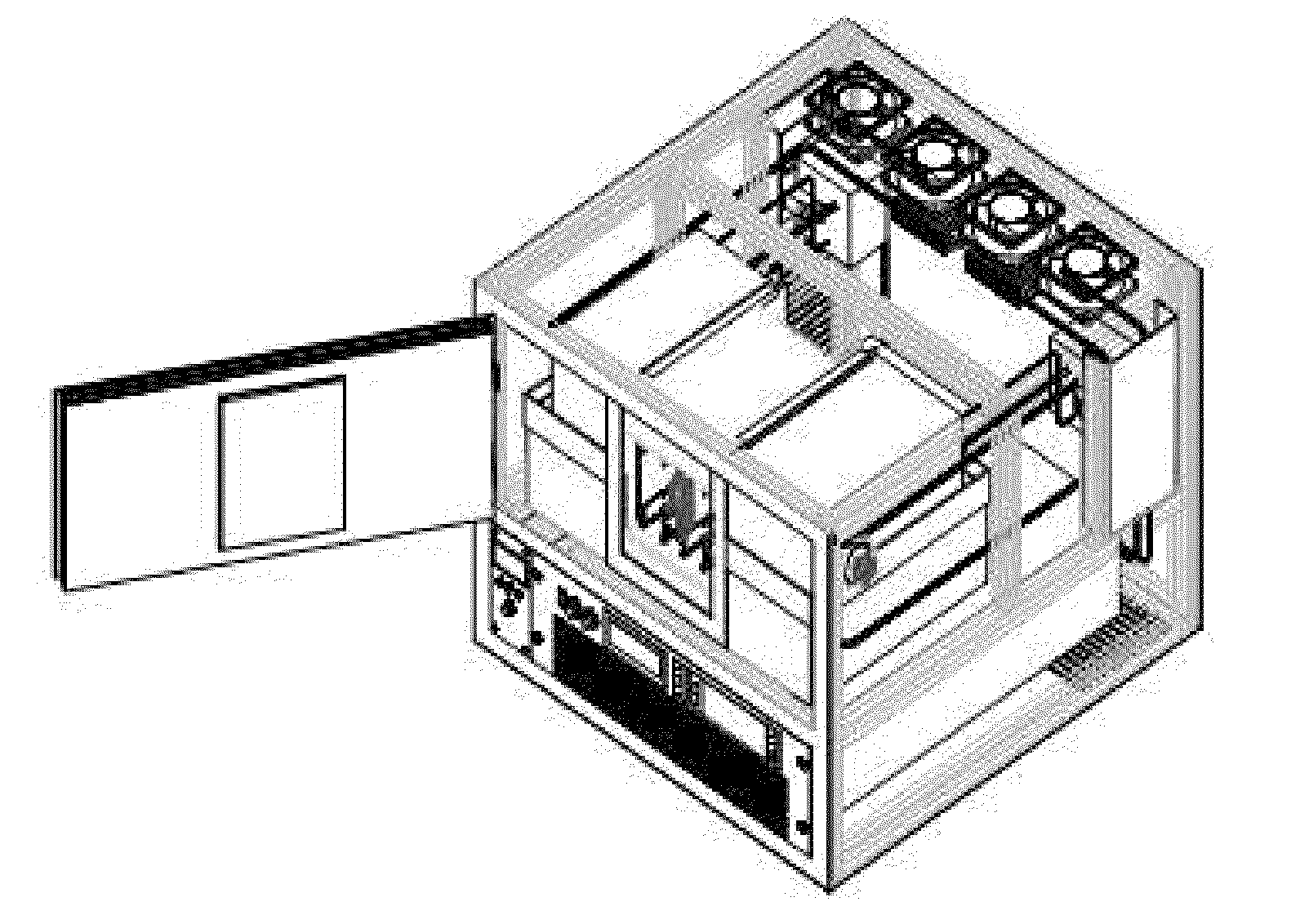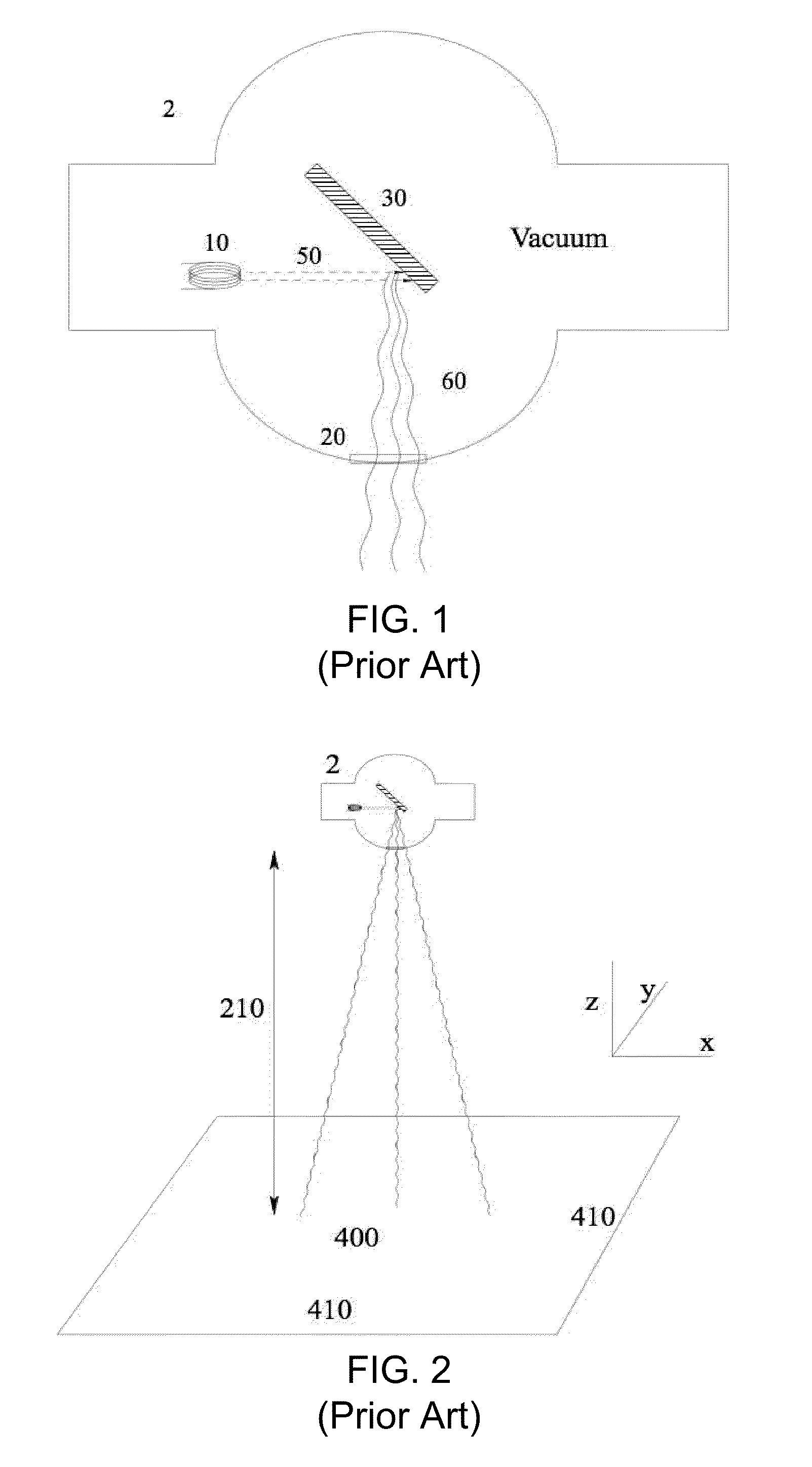Self contained irradiation system using flat panel x-ray sources
a x-ray source and self-contained technology, applied in the direction of x-ray tube target materials, x-ray tube targets and convertors, nuclear engineering, etc., can solve the problems of occupying valuable floor space, cumbersome operation, and weighing three or four tons, and achieves smoothing out the flux distribution of the source, and reducing the cost of operation.
- Summary
- Abstract
- Description
- Claims
- Application Information
AI Technical Summary
Benefits of technology
Problems solved by technology
Method used
Image
Examples
Embodiment Construction
[0038]Preferred embodiments of the present disclosure are illustrated in the FIGs., like numerals being used to refer to like and corresponding parts of the various drawings.
[0039]Embodiments of the present disclosure provide an apparatus and method for the X-ray irradiation of materials. This apparatus includes an irradiation chamber, a number of flat electromagnetic (X-ray) sources, a support mechanism, a heat transfer system, and a shielding system. A shielded portal within the shielding system allows access to an interior volume of the irradiation chamber. The shielded portal allows materials to be placed in and withdrawn from the irradiation chamber. When closed, the shielded portal allows a continuous shielded boundary of the interior volume of the irradiation chamber. The electromagnetic sources are positioned on or embedded with interior surfaces of the irradiation chamber. These electromagnetic sources may generate an electromagnetic flux, such as an X-ray flux, where this ...
PUM
 Login to View More
Login to View More Abstract
Description
Claims
Application Information
 Login to View More
Login to View More - R&D
- Intellectual Property
- Life Sciences
- Materials
- Tech Scout
- Unparalleled Data Quality
- Higher Quality Content
- 60% Fewer Hallucinations
Browse by: Latest US Patents, China's latest patents, Technical Efficacy Thesaurus, Application Domain, Technology Topic, Popular Technical Reports.
© 2025 PatSnap. All rights reserved.Legal|Privacy policy|Modern Slavery Act Transparency Statement|Sitemap|About US| Contact US: help@patsnap.com



